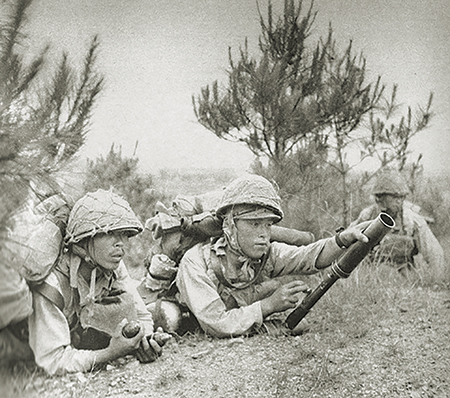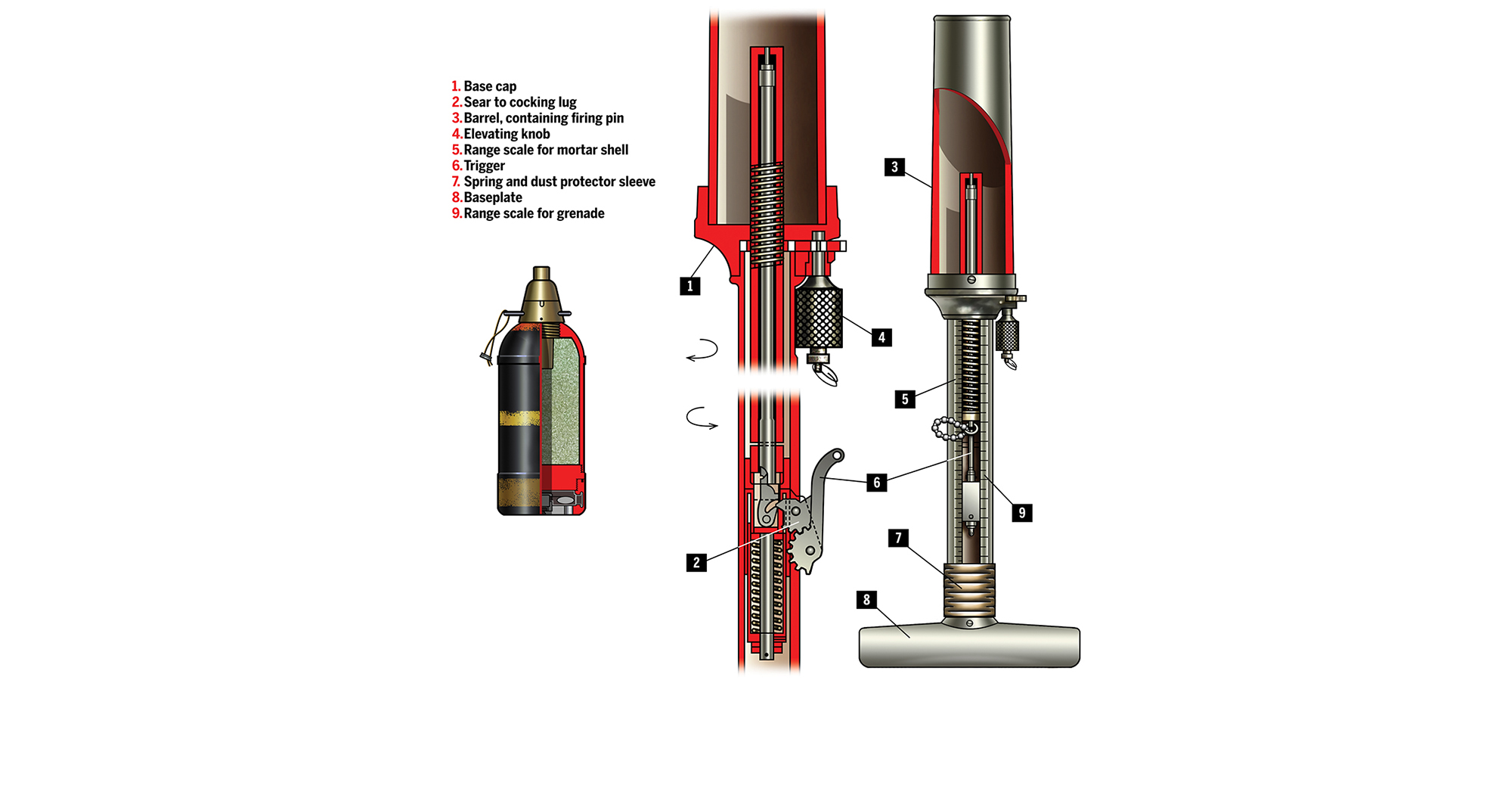Specifications
Weight: 10 pounds 6 ounces
Length: 24 inches
Barrel length: 10 inches
Bore: 50 mm
Effective range: 131 yards (120 meters)
Maximum range: 732 yards (670 meters)
Soon after introducing hand grenades to its army, Japan sought a means of extending the weapon’s range, both with rifle grenades and specialized projectors—essentially small mortars. The goal was to provide troops in confined urban, trench or jungle warfare with backup firepower. This led to the development in 1921 of the smoothbore Type 10 50 mm grenade discharger and its rifled 1929 successor, the Type 89 heavy grenade discharger, or hachikyu-shiki ju-tekidanto.
The Type 89 fired either the Type 91 fragmentation grenade, a versatile round that could also be thrown or fired from a spigot projector, or the Type 89 50 mm shell, which detonated on contact. The latter round came in high-explosive, smoke and incendiary versions.

Although the Type 89 could be operated singly, the typical crew comprised three men, enabling it to achieve a fire rate of 25 rounds per minute. The grenade had a propellant base and a time fuze that ignited in flight, providing a seven- to eight-second delay.
The mortar’s curved baseplate allowed its crew to set it on the ground, atop a log or against the base of a tree at a 45-degree angle. Its spring-loaded and lanyard-operated firing pin mechanism also made it possible to brace the mortar against a wall or tree trunk and fire horizontally. Japanese manuals noted the weapon was carried strapped to the leg above the knee—not fired from it. Believing the latter to be true, the Allies dubbed the Type 89 the “knee mortar,” a misnomer that came back to haunt (i.e., seriously injure) anyone thus trying out captured specimens.
Japan produced some 120,000 Type 89 tekidanto. Its army assigned the average 3,843-man infantry regiment 108 such weapons, roughly one for every 36 troops. Accurate at up to 131 yards (120 meters), the knee mortar inspired fear and respect among Allied riflemen hearing its distinctive “pop” in the midst of combat. MH





